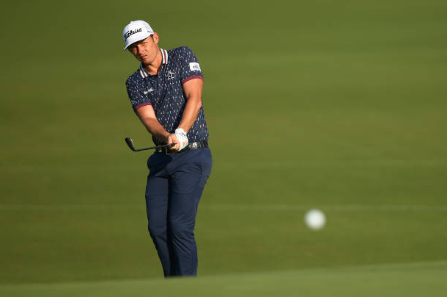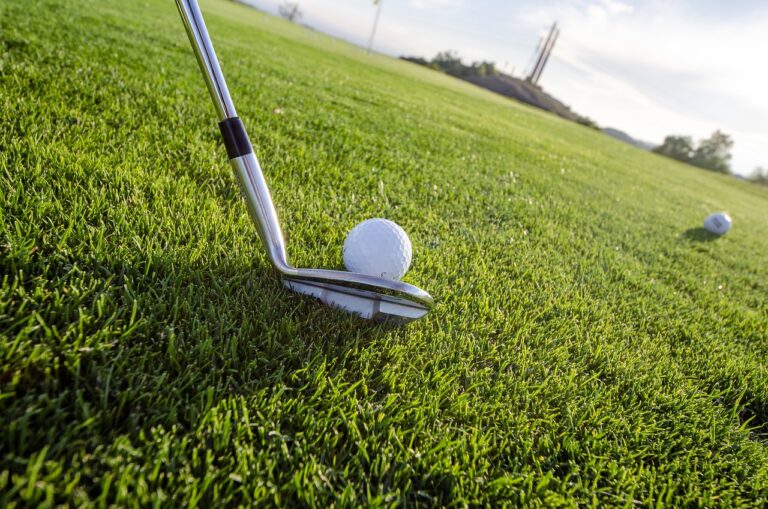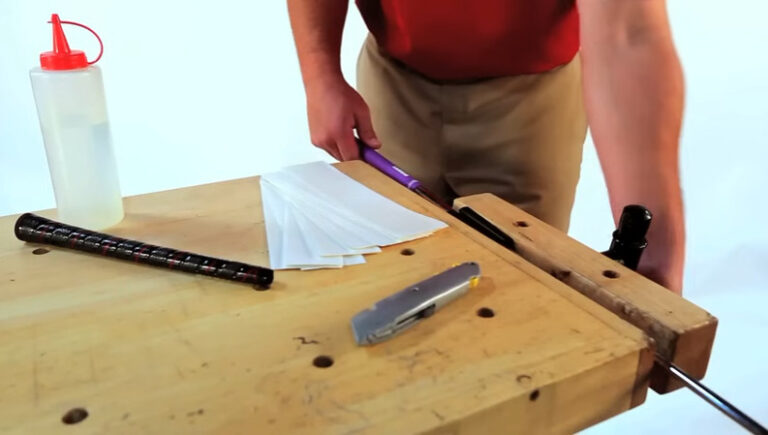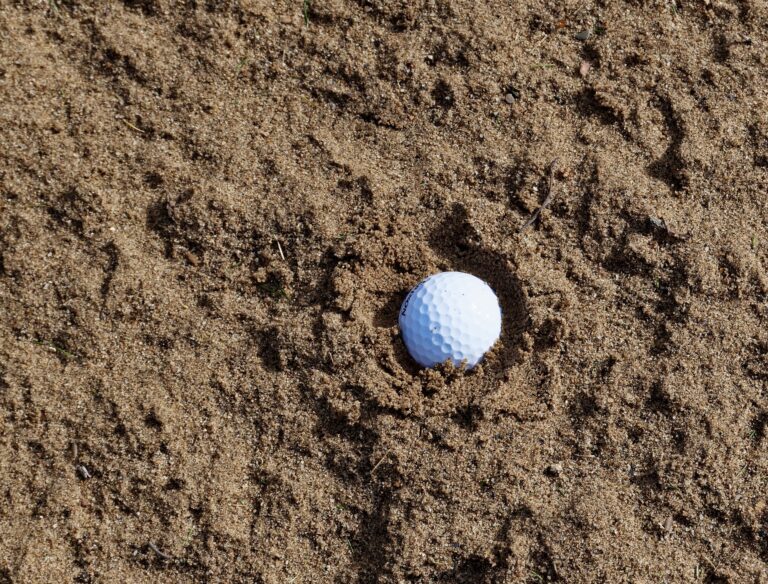how to hit a draw in golf.
Hi folks, it’s tee time again and I am here to share some incredible insights with you to help you take your lovely game to the next level. We are sharing insights into how to hit a draw in golf consistently and effortlessly.
Hitting a draw in golf can be a game-changer for many players, allowing them to shape their shots and improve their overall performance on the course.
A draw is a shot that starts to the right of the target and curves back towards it, usually resulting in more distance and accuracy. While it may seem like a difficult skill to master, with the right technique and practice, anyone can learn how to hit a draw.
One of the key elements to hitting a draw is adjusting your setup. This includes your stance, alignment, and grip. For example, setting up slightly right of the target can help create the proper swing path for a draw.
Additionally, adjusting your grip to be more in the base of your fingers and not angled across your palm can help you swing freely and easily close the clubface in relation to your swing. By making these adjustments, you can set yourself up for success when attempting to hit a draw.
Another important factor in hitting a draw is understanding the proper swing path. This involves swinging the club on an inside-out path, with the clubhead moving towards the ball from the inside of the target line and then curving back towards it.
Dropping your right foot back an inch or two at the address can create room on the downswing for the desired in-to-out swing path. With these adjustments, you can start to hit a draw consistently and add a valuable tool to your golf game.
Definition of a Draw.
A draw is a golf shot that starts to the right of the target for right-handed golfers (or to the left for left-handed golfers) and curves back toward the target. This shot shape is highly sought after by golfers as it adds distance and control to their shots.
Why Golfers Aim for a Draw.

A draw is a sought-after shot shape in golf for several reasons. Golfers aim for a draw because it offers benefits in terms of distance, control, and shot versatility. Here are some of the primary reasons why golfers strive to master the draw:
Increased Distance.
A draw typically provides increased distance compared to a fade or a straight shot. This increased distance is due to the topspin generated by the draw, which causes the ball to roll forward after landing, resulting in extra yardage.
Golfers who can consistently hit a draw can gain a competitive advantage by achieving longer drives and reaching greens in fewer strokes.
Improved Control.
A draw is considered a more controllable shot shape compared to a slice or a hook, which are often the result of swing flaws or mis-hits.
The natural curvature of a draw allows golfers to shape their shots around obstacles such as trees or bunkers and helps them hold the green more effectively on approach shots. Mastering the draw can lead to better course management and lower scores.
Shot Versatility.
Golfers who can consistently hit a draw demonstrate a higher level of skill and shot-making ability. By having a draw in their arsenal, golfers can adapt to various course conditions and situations, such as hitting into a crosswind or navigating a dogleg.
The ability to shape shots and control ball flight is a valuable asset on the golf course and can contribute to improved performance.
Avoiding Common Mis-hits.
Many amateur golfers struggle with a slice, which is a shot that curves significantly from left to right for right-handed golfers (or from right to left for left-handed golfers).
By learning to hit a draw, golfers can counteract the slice and develop a more reliable and controlled shot shape, leading to better consistency and accuracy on the course.
In summary, golfers aim for a draw because it offers increased distance, improved control, shot versatility, and helps avoid common mis-hits. By mastering the draw, golfers can enhance their overall performance and gain a competitive edge on the golf course.
The Basics of Hitting a Draw.
Mastering the draw shot in golf requires understanding the essential components that contribute to this desirable shot shape.
The fundamentals of hitting a draw include clubface position, swing path, and body alignment.
By focusing on these elements and practicing them consistently, you can achieve a reliable draw shot that adds distance and control to your game.
Clubface Position.
The position of the clubface at impact is crucial in hitting a draw. The clubface should be slightly closed, pointing a little to the right of the target for right-handed golfers or to the left for left-handed golfers.
This closed clubface position creates the necessary right-to-left spin (for right-handed golfers) or left-to-right spin (for left-handed golfers) that results in a draw.
Swing Path.

An essential component of hitting a draw is the swing path. To generate the desired shot shape, your swing path should follow an inside-to-outside trajectory.
This means that the club approaches the ball from the inside (closer to your body) and swings outward, away from your body, during the downswing. This inside-to-outside swing path imparts the appropriate spin on the ball, causing it to curve back toward the target.
Body Alignment.
Proper body alignment is critical for consistently hitting a draw. When setting up for the shot, ensure that your feet, hips, and shoulders are aligned slightly to the right of the target for right-handed golfers or to the left for left-handed golfers.
This alignment encourages the inside-to-outside swing path and helps the ball start to the right (for right-handed golfers) or to the left (for left-handed golfers) of the target before curving back in.
By concentrating on the basics of hitting a draw, such as clubface position, swing path, and body alignment, you can develop a consistent draw shot that adds distance and precision to your game.
Keep in mind that practice is vital for perfecting this shot shape, so invest time in working on these fundamentals to experience improvements on the golf course
Step-by-Step Guide to Hit a Draw
Hitting a draw is a valuable skill in golf, offering benefits such as increased distance and improved control. Here is a step-by-step guide to help you hit a draw consistently:
Step 1: Proper Grip
Start by ensuring you have the correct grip. A slightly stronger grip is often recommended for hitting a draw. For right-handed golfers, rotate your hands slightly to the right on the club (for left-handed golfers, rotate to the left). This grip helps maintain a closed clubface throughout the swing, which is crucial for producing a draw.
Step 2: Body Alignment
Proper body alignment is essential for hitting a draw. When setting up for the shot, align your feet, hips, and shoulders slightly to the right of the target for right-handed golfers (or to the left for left-handed golfers). This alignment promotes the inside-to-outside swing path required for a draw.
Step 3: Ball Position
Place the ball slightly back in your stance. This positioning encourages the club to approach the ball from the inside, which is necessary for an inside-to-outside swing path.
Step 4: Clubface Position
As you set up for the shot, ensure that your clubface is slightly closed, pointing a bit to the right of the target for right-handed golfers (or to the left for left-handed golfers). This closed clubface position helps generate the necessary side spin for a draw.
Step 5: Swing Path
As you start your backswing, focus on creating an inside-to-outside swing path. This means that the club should approach the ball from the inside (closer to your body) and swing outwards, away from your body, during the downswing. This inside-to-outside swing path creates the proper spin on the ball, resulting in a draw.
Step 6: Release the Club
As you transition into the downswing, ensure that you release the club smoothly and naturally. This release helps close the clubface through impact, promoting the right-to-left spin (for right-handed golfers) or left-to-right spin (for left-handed golfers) needed for a draw.
Step 7: Follow-Through
Finish your swing with a full, balanced follow-through. A proper follow-through ensures that you have maintained the correct swing path and clubface position throughout the entire swing, which is vital for producing a consistent draw.
By following these steps and practicing them regularly, you can develop the skills and muscle memory necessary to hit a draw consistently. Remember that patience and persistence are essential in perfecting this shot shape, so don’t be discouraged if it takes some time to achieve the desired results.
Common Draw Mistakes and How to Fix Them
When attempting to hit a draw, golfers might encounter some common mistakes that can hinder their progress.
Identifying these mistakes and learning how to fix them can help you achieve a consistent and reliable draw. Here are some of the most common draw mistakes and how to correct them:
Over-rotating the Clubface
One frequent mistake when trying to hit a draw is over-rotating the clubface, which can lead to a hook instead of a draw.
To fix this issue, maintain a controlled, smooth tempo throughout your swing and avoid forcing the clubface to close too aggressively. Practicing a proper release and follow-through can also help prevent over-rotation.
Poor Body Alignment
Improper body alignment can result in a push or a slice instead of a draw. To correct this, ensure that your feet, hips, and shoulders are aligned slightly to the right of the target for right-handed golfers (or to the left for left-handed golfers) during your setup.
Practicing proper body alignment during your pre-shot routine can help promote a consistent inside-to-outside swing path.
Incorrect Swing Path
An incorrect swing path can also hinder your ability to hit a draw. Focus on swinging from inside to outside, with the club approaching the ball from the inside and then moving outward during the downswing.
To ingrain the correct swing path, practice drills such as the Two-Ball Drill or the Alignment Stick Drill, which emphasize an inside-to-outside swing path.
Inconsistent Grip
An inconsistent or overly weak grip can make it challenging to maintain the closed clubface position necessary for a draw.
Ensure that you have a slightly stronger grip, with your hands rotated slightly to the right (for right-handed golfers) or to the left (for left-handed golfers) on the club. Practicing a consistent grip can help you achieve the proper clubface position at impact.
Rushing the Downswing
Rushing the downswing can lead to various swing flaws, including an open clubface or an outside-to-inside swing path, both of which can prevent a draw.
To fix this, maintain a smooth, rhythmic tempo throughout your swing, allowing your body to naturally transition from the backswing to the downswing.
By identifying and correcting these common draw mistakes, you can improve your ability to hit a consistent draw on the golf course.
Remember that practice is crucial for perfecting this shot shape, so dedicate time to working on these fixes to see progress in your game.
Practice Drills for Perfecting Your Draw
Developing a consistent draw requires practice and patience. Here are some effective drills that can help you perfect your draw by focusing on the essential components such as swing path, clubface position, and body alignment:
Tee Drill
The Tee Drill helps you develop an inside-to-outside swing path, which is crucial for hitting a draw.
- Place a tee in the ground about two feet behind your golf ball and slightly inside the target line.
- As you take your backswing, focus on bringing the clubhead over the tee.
- On the downswing, swing the clubhead back over the tee, promoting an inside-to-outside swing path.
Practicing this drill can help ingrain the proper swing path needed for a draw.
Two-Ball Drill
The Two-Ball Drill helps you concentrate on the correct swing path and clubface position for a draw.
- Place two golf balls on the ground, with one slightly in front and to the right of the other (for right-handed golfers, reverse for left-handed golfers).
- Set up as if you were going to hit the back ball.
- Take your swing and try to strike both balls simultaneously or hit the back ball first, then the front ball.
This drill encourages an inside-to-outside swing path and a closed clubface at impact, both essential for a draw.
Alignment Stick Drill
The Alignment Stick Drill assists in developing proper body alignment and swing path for a draw.
- Place an alignment stick on the ground, pointing slightly to the right of your target (for right-handed golfers) or to the left (for left-handed golfers).
- Set up with your feet, hips, and shoulders parallel to the alignment stick.
- Take your swing and focus on swinging the clubhead along the alignment stick, promoting an inside-to-outside swing path.
This drill helps you establish the correct body alignment and swing path for hitting a draw consistently.
Glove Drill
The Glove Drill helps you maintain a slightly stronger grip, which is beneficial for hitting a draw.
- Place a golf glove or small towel under your lead armpit (left armpit for right-handed golfers, right armpit for left-handed golfers).
- Take your swing while keeping the glove or towel in place throughout the entire motion.
- Focus on maintaining a slightly stronger grip, which can help promote a closed clubface at impact.
Practicing this drill can help you develop a consistent grip for hitting a draw.
Dedicating time to these practice drills, you can improve your ability to hit a draw consistently.
Remember that patience and persistence are essential for perfecting this shot shape, so don’t be discouraged if it takes some time to see results on the course.
Key Factors to Remember.
When working on perfecting your draw shot in golf, it’s essential to remember several key factors that contribute to a consistent and reliable draw. Here are the key factors to keep in mind as you practice and play:
Proper Grip
Maintain a slightly stronger grip, with your hands rotated slightly to the right (for right-handed golfers) or to the left (for left-handed golfers) on the club. This grip helps ensure a closed clubface at impact, which is necessary for a draw.
Body Alignment
Ensure that your feet, hips, and shoulders are aligned slightly to the right of the target for right-handed golfers (or to the left for left-handed golfers) during your setup. Proper body alignment promotes an inside-to-outside swing path, which is crucial for hitting a draw.
Ball Position
Position the ball slightly back in your stance to encourage the club to approach the ball from the inside. This ball placement helps promote an inside-to-outside swing path.
Clubface Position
As you set up for the shot, ensure that your clubface is slightly closed, pointing a bit to the right of the target for right-handed golfers (or to the left for left-handed golfers). This closed clubface position helps generate the necessary side spin for a draw.
Swing Path
Focus on creating an inside-to-outside swing path, with the club approaching the ball from the inside (closer to your body) and swinging outwards, away from your body, during the downswing. This inside-to-outside swing path creates the proper spin on the ball, resulting in a draw.
Smooth Tempo and Transition
Maintain a smooth, rhythmic tempo throughout your swing and allow your body to naturally transition from the backswing to the downswing. Avoid rushing the downswing, which can lead to various swing flaws that prevent a draw.
Consistent Practice
Dedicate time to practicing the essential components of a draw and working on drills that focus on grip, alignment, swing path, and clubface position. Remember that patience and persistence are vital for perfecting this shot shape.
By keeping these key factors in mind and incorporating them into your practice routine, you can develop a consistent and reliable draw that adds distance and control to your golf game.
FAQs
How can I turn my slice into a draw?
To turn your slice into a draw, you need to make adjustments to your grip, body alignment, and swing path. Strengthen your grip, align your body slightly to the right of the target (for right-handed golfers), and focus on an inside-to-outside swing path. Practicing these changes can help transform your slice into a draw.
Can a beginner golfer learn to hit a draw?
Yes, a beginner golfer can learn to hit a draw. It requires patience, practice, and a focus on the key components such as grip, alignment, swing path, and clubface position. Working with a golf instructor or utilizing online resources can also help beginners learn this shot shape.
Why does my draw sometimes turn into a hook?
A draw turns into a hook when the clubface is excessively closed at impact or the swing path is too far from the inside. To correct this issue, focus on maintaining a controlled, smooth tempo throughout your swing and avoid forcing the clubface to close too aggressively.
Do I need different clubs to hit a draw?
While certain club specifications can make it easier to hit a draw, it’s not necessary to have different clubs. Developing the proper technique and focusing on the key factors of a draw can help you hit this shot shape with your existing clubs.
How do I practice hitting a draw on the driving range?
When practicing a draw on the driving range, focus on key factors such as grip, alignment, ball position, clubface position, and swing path.
Utilize targeted drills like the Tee Drill, Two-Ball Drill, Alignment Stick Drill, and Glove Drill to help ingrain the proper technique. Aim for specific targets on the range and observe your ball flight to gauge your progress.
Conclusion.
Hitting a draw in golf is a valuable skill that can enhance your performance on the course by providing increased distance, improved control, and shot versatility.
To perfect your draw, it’s essential to focus on key factors such as proper grip, body alignment, ball position, clubface position, swing path, and maintaining a smooth tempo throughout your swing.
By dedicating time to practicing these components and working on targeted drills, you can develop a consistent and reliable draw that elevates your golf game.
Remember that patience and persistence are crucial when working on this shot shape, so don’t be discouraged if it takes time to see results on the course. Keep refining your technique, and soon enough, you’ll be hitting a draw with confidence and precision.






